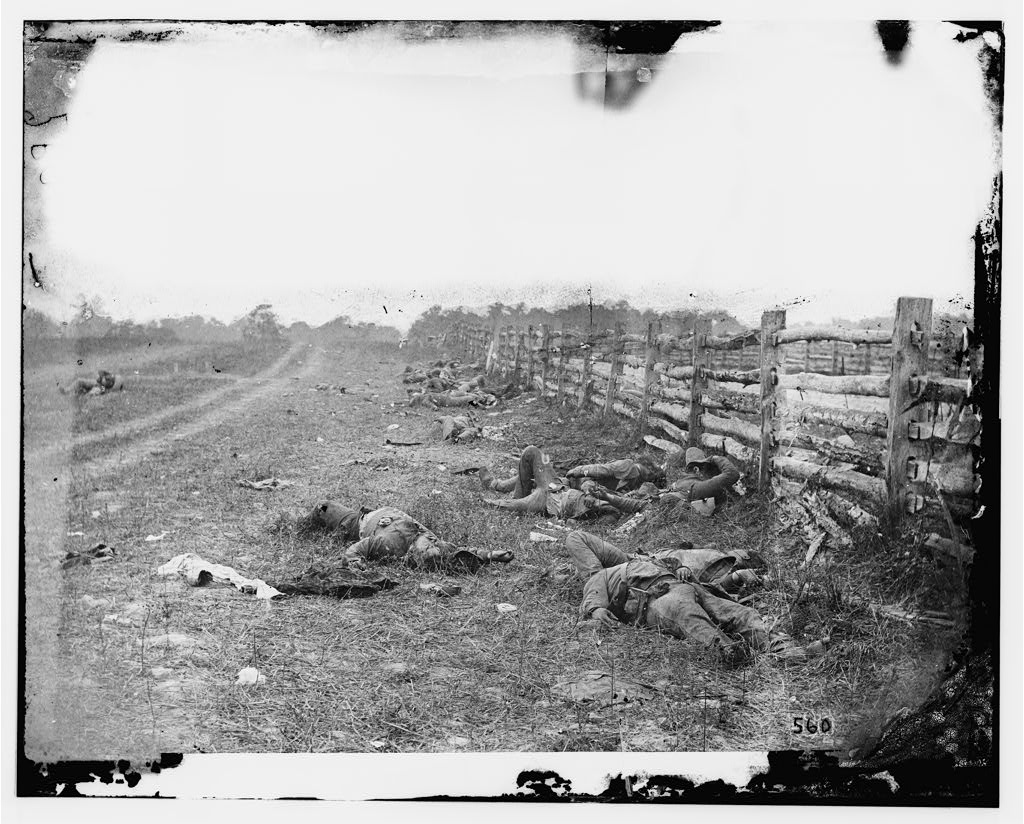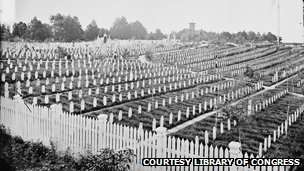For 110 years, the numbers stood as gospel: 618,222 men died in the Civil War, 360,222 from the North and 258,000 from the South — by far the greatest toll of any war in American history.
But new research shows that the numbers were far too low.
By combing through newly digitized census data from the 19th century, J. David Hacker, a demographic historian from Binghamton University in New York, has recalculated the death toll and increased it by more than 20 percent — to 750,000.
The new figure is already winning acceptance from scholars. Civil War History, the journal that published Dr. Hacker’s paper, called it “among the most consequential pieces ever to appear” in its pages. And a pre-eminent authority on the era, Eric Foner, a historian at Columbia University, said:
“It even further elevates the significance of the Civil War and makes a dramatic statement about how the war is a central moment in American history. It helps you understand, particularly in the South with a much smaller population, what a devastating experience this was.”
The old figure dates back well over a century, the work of two Union Army veterans who were passionate amateur historians: William F. Fox and Thomas Leonard Livermore.
Fox, who had fought at Antietam, Chancellorsville and Gettysburg, knew well the horrors of the Civil War. He did his research the hard way, reading every muster list, battlefield report and pension record he could find.
In his 1889 treatise “Regimental Losses in the American Civil War, 1861-1865,” Fox presented an immense mass of information. Besides the aggregate death count, researchers could learn that the Fifth New Hampshire lost more soldiers (295 killed) than any other Union regiment; that Gettysburg and Waterloo were almost equivalent battles, with each of the four combatant armies suffering about 23,000 casualties; that the Union Army had 166 regiments of black troops; and that the average Union soldier was 5 feet 8 1/4 inches tall and weighed 143 1/2 pounds.
Fox’s estimate of Confederate battlefield deaths was much rougher, however: a “round number” of 94,000, a figure compiled from after-action reports. In 1900, Livermore set out to make a more complete count. In his book, “Numbers and Losses in the Civil War in America, 1861-65,” he reasoned that if the Confederates had lost proportionally the same number of soldiers to disease as the Union had, the actual number of Confederate dead should rise to 258,000.
And that was that. The Fox-Livermore numbers continued to be cited well into the 21st century, even though few historians were satisfied with them. Among many others, James M. McPherson used them without citing the source in “Battle Cry of Freedom,” his Pulitzer-winning 1988 history of the war.
Enter Dr. Hacker, a specialist in 19th-century demographics, who was accustomed to using a system called the two-census method to calculate mortality. That method compares the number of 20-to-30-year-olds in one census with the number of 30-to-40-year-olds in the next census, 10 years later. The difference in the two figures is the number of people who died in that age group.
Pretty simple — but, Dr. Hacker soon realized, too simple for counting Civil War dead. Published census data from the era did not differentiate between native-born Americans and immigrants; about 500,000 foreign-born soldiers served in the Union Army alone.
“If you have a lot of immigrants age 20 moving in during one decade, it looks like negative mortality 10 years later,” Dr. Hacker said. While the Census Bureau in 1860 asked people their birthplace, the information never made it into the printed report.
As for Livermore’s assumption that deaths from disease could be correlated with battlefield deaths, Dr. Hacker found that wanting too. The Union had better medical care, food and shelter, especially in the war’s final years, suggesting that Southern losses to disease were probably much higher. Also, research has shown that soldiers from rural areas were more susceptible to disease and died at a higher rate than city dwellers. The Confederate Army had a higher percentage of farm boys.
Dr. Hacker said he realized in 2010 that a rigorous recalculation could finally be made if he used newly available detailed census data presented on the Internet by the Minnesota Population Center at the University of Minnesota.
The center’s Integrated Public Use Microdata Series had put representative samples of in-depth, sortable information for individuals counted in 19th-century censuses. This meant that by sorting by place of birth, Dr. Hacker could count only the native-born.
Another hurdle was what Dr. Hacker called the “dreadful” 1870 census, a badly handled undercount taken when the ashes of the war were still warm. But he reasoned a way around that problem.
Because the census takers would quite likely have missed as many women as men, he decided to look at the ratio of male to female deaths in 1870. Next, he examined mortality figures from the decades on either side of the war — the 1850s and 1870s — so that he could get an idea of the “normal” ratio of male to female deaths for a given decade. When he compared those ratios to that of 1860-70, he reasoned, he would see a dramatic spike in male mortality. And he did. Subtracting normal attrition from the male side of the equation left him with a rough estimate of war dead.
It was a better estimate than Fox and Livermore had produced, but Dr. Hacker made it clear that his was not the final answer. He had made several assumptions, each of which stole accuracy from the final result. Among them: that there were no war-related deaths of white women; that the expected normal mortality rate in the 1860s would be the average of the rates in the 1850s and 1870s; that foreign soldiers died at the same rate as native-born soldiers; and that the War Department figure of 36,000 black war dead had to be accepted as accurate because black women suffered so terribly both during and after the war that they could not be used as a control for male mortality.
The study had two significant shortcomings. Dr. Hacker could make no estimate of civilian deaths, an enduring question among historians, “because the overall number is too small relative to the overall number of soldiers killed.” And he could not tell how many of the battlefield dead belonged to each side.
“You could assume that everyone born in the Deep South fought for the Confederacy and everyone born in the North fought for the Union,” he said. “But the border states were a nightmare, and my confidence in the results broke down quickly.”
With all the uncertainties, Dr. Hacker said, the data suggested that 650,000 to 850,000 men died as a result of the war; he chose the midpoint as his estimate.
He emphasized that his methodology was far from perfect. “Part of me thinks it is just a curiosity,” he said of the new estimate.
“But wars have profound economic, demographic and social costs,” he went on. “We’re seeing at least 37,000 more widows here, and 90,000 more orphans. That’s a profound social impact, and it’s our duty to get it right.” [instructor's note: More about African American women?]


